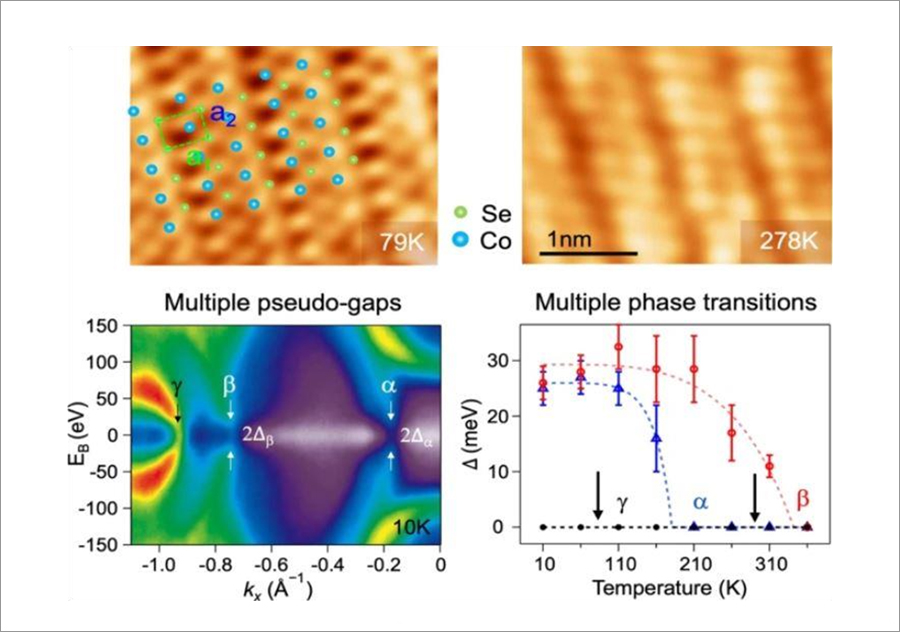Discovery of new electronic transition phenomenon heralds semiconductor revolution

- Successful Synthesis of Cobalt Selenide Monolayers through Joint Research with University of Ulsan and Berkeley Research Team
- Discovery of New 2D Electronic Transition Phenomenon in Cobalt Compounds
Professor Jang Young-jun's research team from University of Seoul(UOS), along with Professor Kim Jeong-dae from University of Ulsan(UOU) and Dr. Choi Byeong-gi from Berkeley Lab in the United States, announced that they had newly synthesized a single layer of cobalt selenide (CoSe₂) and discovered two distinct electronic phase transition phenomena.
The results of this study were published on May 24 in Nano Convergence (Impact factor: 11.7), a top-tier international academic journal in the nano field published by the Korea Nanotechnology Association, under the title, 'Emergence of two distinct phase transitions in monolayer CoSe2 on graphene.‘

▲ Student Lee Tae-gyu (1st, joint first author), Student Nguyen Huu Lam (2nd, joint first author), Professor Kim Jeong-dae (3rd, joint corresponding author), Professor Jang Young-jun (4th, joint corresponding author), Dr. Choi Byeong-gi (right, joint corresponding author)
The research team succeeded in synthesizing a single-layer cobalt selenide thin film on graphene using the ‘molecular layer stacking (MBE) deposition technique.’ The electronic structure and atomic structure characteristics of this thin film were analyzed using angle-resolved photoelectron spectroscopy at a synchrotron radiation accelerator and a scanning tunneling microscope at Ulsan University. Through this, it was confirmed that a new electrical phase transition phenomenon occurred in the two-dimensional structure due to the interaction between electrons and phonons (quantized vibrational energy generated when atoms vibrate in a solid material) and electrons.
Cobalt compounds are used in various fields such as sensors, batteries, and water electrolysis devices. The electrical properties discovered in this study suggest important possibilities for the development of next-generation semiconductor devices.

▲ Atomic arrangement and electronic transition phenomenon of cobalt selenide monolayer
Professor Jang Young-Jun said, “The cobalt selenide monolayer structure developed in this study can be an important platform for studying two unique electronic interactions and can serve as the basis for the development of two-dimensional semiconductor devices.”
This study was conducted with the support of the Group Research Support Project, the Mid-career Researcher Support Project, and the Overseas Large-Scale Research Facility Utilization Research Support Project supported by the Ministry of Science and ICT and the National Research Foundation of Korea.







